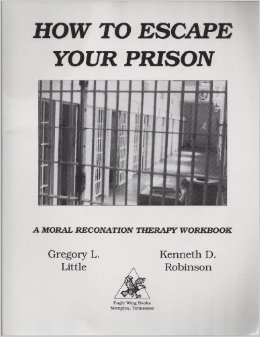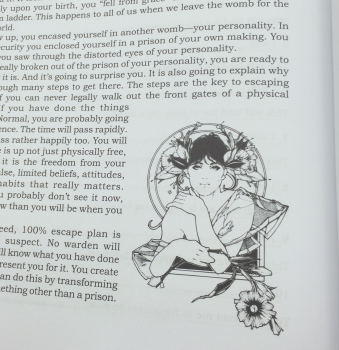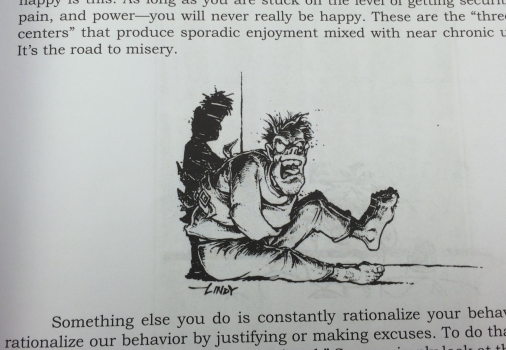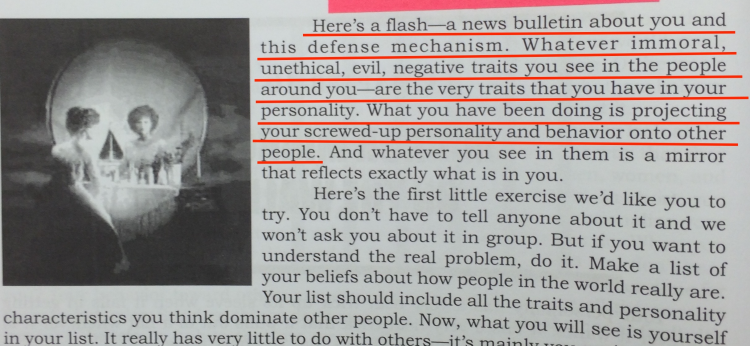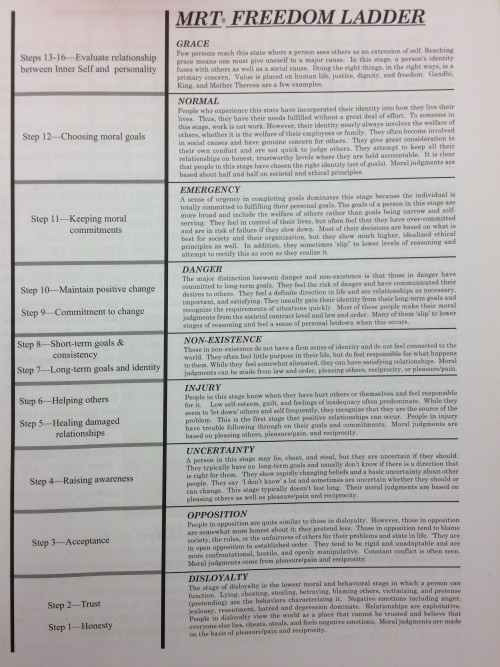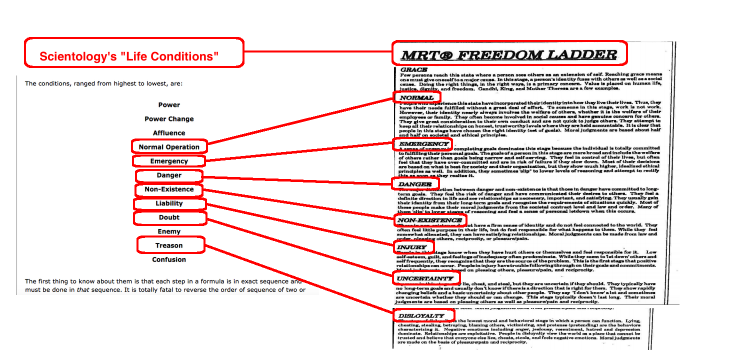It looks like you're using an Ad Blocker.
Please white-list or disable AboveTopSecret.com in your ad-blocking tool.
Thank you.
Some features of ATS will be disabled while you continue to use an ad-blocker.
share:
The very first SIB private funder was Goldman Sachs, which contributed $7.2 million to launch the Adolescent Behavioral Learning Experience (ABLE) in Rikers Island for kids aged 16 to 18.
Goldman Sachs and the team it employed chose MRT as the treatment model.
Why?
MDRC, a private nonprofit policy research organization, was chosen to serve as intermediary between the funding source and the program itself. David Butler, vice president at MDRC, told me that in choosing a program, “a lot of research was done on group cognitive behavioral therapy programs as a way to reduce recidivism.” They looked at meta-analyses and concluded that “MRT was the best bet.”
Goldman Sachs is sponsoring a Scientology-based jail ‘re-education’ program
Greetings ATS. Some of you who follow my posts and threads probably already know that I am somewhat of a Scientology historian and a fervent opposer of the church's practices. While sifting through Scientology related headlines (as I frequently do) I came across an article on Raw Story that ended up consuming my entire early morning.
The headline implicates Goldman Sachs as being a sponsor for a Scientology based 're-education' program. The program is elaborated on in the article and is referred to in Scientology as Moral Reconation Therapy. If you were wondering what the word Reconation means and why you are unfamiliar with it, it's because it was a word made up by Scientology and it bears no significance in any psychiatric profession outside of the church and outside of prison reform programs.
The article is very lengthy, and doesn't get into the Goldman Sachs implication until near the end. The bulk of it is some rather fascinating investigative reporting on the history of MRT and it's use in American prisons. I will try to highlight and summarize the key notes of the article and give my informed opinion about the matter in the end.
A few years ago, Abe Bergman’s 19-year-old son was court-ordered into a residential treatment program in Washington State for co-occurring mental illness and “substance abuse.” After he’d been in the program about a week, Bergman called and asked: “Can I come visit my son?”
The person he spoke to, a counselor, said: “No, he hasn’t earned enough points yet.”
“I thought,” Bergman says, “with someone with mental illness, wouldn’t it be good to have their family there? They said, ‘No. We run something call Moral Reconation Therapy here.’”
The article begins with a story about a father who was disconnected from his son (very typical story for the church). His son was in a criminal rehabilitation program in Washington state, this program was created by, run by, and lobbied for by Scientology.
Bergman, a retired pediatrician and faculty member at the University of Washington, never was able to visit his son. He wondered, what was this mysterious-sounding “Moral Reconation Therapy” (MRT)? The term bugged him. It sounded like “trying to invent new words that don’t mean anything, but imply a certain specialness.”
So he talked to “six or seven mental health professionals—psychiatrists.” He asked them, “Do you know about MRT?”
None of them did.
He called the person who then ran the mental health office for Washington State. They’d never heard of it.
Finally, he talked to someone who worked in the criminal justice system. They’d heard of it, because MRT is used widely—according to the website of Correctional Counseling, the company that promotes and sells MRT—“in parole and probation, with juvenile offenders, in schools, halfway houses, drug treatment programs, jails, and venues covering the entire range of corrections.” It can also be employed “anywhere there’s substance abuse,” as someone associated with the program, who didn’t want their name used, told me.
Upon further inquiry, the father realized that MRT was not your average form of psychotherapy. The entire concept is demoralizing, convoluted, and mentally damaging. This is where the article goes into great detail about the history of Moral Reconation Therapy.
MRT was developed by Greg Little and Ken Robinson, who met while studying counseling at the University of Memphis in the late 1960s, as Robinson describes in this video posted in 2015 “How Moral Reconation Therapy (TM) came to be:” The pair got jobs working in the Shelby County Correction Center in Tennessee: Little in the mental health unit, Robinson in the drug offender program.
Robinson and Little continued to develop and test MRT between 1979 and 1983 at the Federal Correctional Institute in Memphis. In 1990, they establish Correctional Counseling a “free standing privately held company” to “design, research and implement programs that can make a difference in people’s lives.” Robinson (below, left), who went on to get his doctorate in educational psychology, remains the president of Correctional Counseling today.
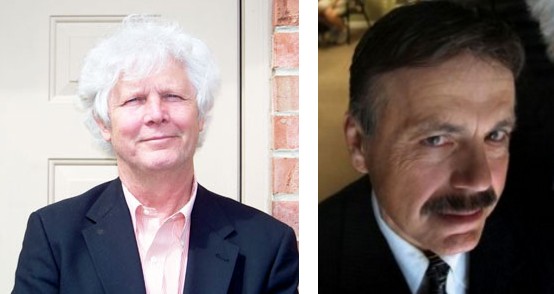
Sounds legit so far, right? Wrong.
Little ([above], right) has taken a slightly different path. He’s now a “Paranormal Investigator, Ancient Mystery Explorer, Documentary Filmmaker, UFO Theorist, Author and More.”
Little and Robinson assert that “clients enter treatment with low levels of moral development, strong narcissism, low ego/identity strength, poor self-concept, low self-esteem, inability to delay gratification, relatively high defensiveness, and relatively strong resistance to change and treatment.”
According to this theory, these traits lead to criminal activity. In contrast, those who have attained high levels of “moral development” are not likely to behave in a way that is harmful to others or violates laws.
Moral Reconation Therapy reflects the idea that people who end up incarcerated are morally inferior—and that is why they are in a prison. It’s an idea that anyone familiar with the history of the War on Drugs, for example, would reject. And the more I investigated MRT, the more I found there was something significantly wrong with this program—and that no one seemed to realize or care.
Enter the spiritually devoid, morally corrupted, psychologically contrived creation of the church.
The main MRT manual used across the country, given to every participant, is called How to Escape Your Prison.
Other language and images throughout the text reiterates the idea that people who are incarcerated are inferior to those who aren’t.
They’re inferior intellectually:
“We might add that the words you read here are simple enough for anyone with half a mind to understand” (p. 16)
“if you think you know something about psychology, just put it aside for a while. What you think you know will only confuse you” (p. 17)
But most importantly, they’re inferior morally. And the fact that they’re incarcerated—and this is key—is only their fault, no one else’s:
“You have probably become aware of the sorry state of your life and the fact that you, alone, are responsible for where you are.”
“The large majority of those reading this book need to begin at Step one because they are in the box of disloyalty. We estimate that 90% of this book’s readers are there. (Sorry- but if we told you differently, we would not be doing you a favor)” (p.36)
“If you can’t do Step 1, it simply means you are not ready to change. It means you are dishonest and can’t be trusted. And it also means that you want to stay that way” (p. 40).
The theory creates a double bind that leaves no way to disagree, challenge or critique the contents themselves. If you disagree with the contents of the book, you’re automatically just dishonest and don’t want to change.
There’s also an underlying pseudo-Christian element, like this”original sin”-ish part: “Immediately upon your birth, you “fell from grace” and began your descent down the freedom ladder.”
The highest level one can achieve in terms of morality on the freedom ladder is a state of “Grace,” a stage in which “one must give oneself to a major cause.”
Continued in next post.......
.....Continued from previous post.
The author of the article continues to go into enormous detail about the the complexity of MRT and its fallacies both logical and practical. I will highlight some of the key points because I think it is important but after that I will jump to the Goldman Sachs connection to save you all the time. Although, I do recommend reading the entire article as I believe it is worth the time.
A perfect example of neurolinguistic programming, otherwise known as NLP, and in true Scientology fashion the exploitation of ancient technology rebranded into something that they could then sell.
The author then and finally starts to make the connection of Scientology, Goldman Sachs, & the Prison Industrial Complex more apparent.
Enter Goldman Sachs.
Very interesting, yes. So my curiosity is piqued now that I know of the role of this 'intermediary' or 'middle man' is to procure the deal on behalf of the investor. What's even more interesting is how Mr. Butler was so forthcoming on his shortcomings.
Continued in next post.....
The moralizing, vaguely religious rhetoric throughout the workbook is accompanied by slightly bizarre cartoons. Many are comically outdated—as if they were made on WordPerfect in 1993—some are disparaging of people who are in prison, and some are just odd.
The vast majority of people (as opposed to fairies or monsters) depicted in the book are white—odd in a system where nearly 80 percent of people in federal prison and almost 60 percent of people in state prison for drug offenses are black or Latino.
The author of the article continues to go into enormous detail about the the complexity of MRT and its fallacies both logical and practical. I will highlight some of the key points because I think it is important but after that I will jump to the Goldman Sachs connection to save you all the time. Although, I do recommend reading the entire article as I believe it is worth the time.
When I put to multiple people associated with Moral Reconation Therapy that people might balk at equating morals with laws, with teaching “morality” as a therapeutic treatment, they explained that the “moral” in MRT actually comes from Lawrence Kohlberg's theory of six stages of moral development.
MRT has, depending on interpretation (some stages incorporate sub-stages), nine-to-16 levels of morality, ranging from “Disloyalty,” the lowest, to “Grace” (the highest). These stages—which don’t appear to share anything in common with Kohlberg’s stages (more on that soon)—make up the “MRT Freedom Ladder.”
What about the made-up-sounding word “Reconation”? Little and Robinson write:
“Prior to common usage of the term ‘ego’ in psychology in the 1930s, the term ‘conation’ was employed to describe the conscious process of decision-making and purposeful behavior. The term moral reconation was chosen … because the underlying goal was to change conscious decision-making to higher levels of moral reasoning.”
A perfect example of neurolinguistic programming, otherwise known as NLP, and in true Scientology fashion the exploitation of ancient technology rebranded into something that they could then sell.
When the word “Scientology” began cropping up in my searches in connection with Smothermon, I delved deeper, and suddenly noticed a shocking similarity, one that was clearly not coincidental: MRT’s Freedom Ladder is an almost direct replica of Scientology’s “Life Conditions.”
Both include the stages, in the same descending order, of: “Normal,” “Emergency,” “Danger,” and “Non-Existence.” Then, Scientology has “Liability, while MRT has “Injury;” Scientology has “Doubt” while MRT has “Uncertainty;” and last, Scientology has “Treason” where MRT has “Disloyalty.”
The author then and finally starts to make the connection of Scientology, Goldman Sachs, & the Prison Industrial Complex more apparent.
I wanted to find out more about this strange book that has been forced on a million people in the prison system, this book that uses terms and ideas from Scientology and tells people that their immoral personalities are responsible for their substance use, their incarceration and their unhappiness.
When I tried to order some books from their website, I was informed that only people who have undergone the patented MRT training can even order the book. Basic trainings cost around $600 to attend.
MRT’s representatives seemed pretty secretive, too, when I tried to reach them.
The first reaction of the Correctional Counseling representative who picked up the phone was suspicion: “How did you find out about MRT?”
She asked me several times who I was and what I was interested in writing about, even though I’d already simply told her that I was a reporter interested in writing about MRT. She then said that a clinician would email me; he never did. So I emailed them—no response. I called and left messages multiple times. One person did speak to me then, but only off the record.
Finally, instead of continuing to ask for Robinson himself, I requested Steve Swan, vice president of Correctional Counseling.
Swan emailed me. The subject line was: “I hope the attached information is helpful in response to your question.” The body of the email was a link to a 2000 article on MRT and its success.
I replied that I had some questions, and was planning to write an article that touched on some concerns about the program’s moral component. I wrote that I would love to include a defense of MRT in my article.
He replied:
“I don’t really have anything else that I can add. You might view some of the interviews that both Dr. Little and Dr. Robinson have posted at the following link: [here]. It might provide some clarification regarding some of your questions.”
I had already seen the videos.
I wrote: “Do you all still stand by the statement in How to Escape Your Prison that 90 percent of people in prison are in the lowest level of morality, i.e. the stage of ‘Disloyalty’?”
No answer.
Lastly, I gave him an opportunity to respond to the strong similarities between MRT’s Freedom Ladder and Scientology’s Life Conditions.
No answer.
Enter Goldman Sachs.
The much-heralded “social impact bond” (SIB) uses money from private funders to pay for public policy programs.
The very first SIB private funder was Goldman Sachs, which contributed $7.2 million to launch the Adolescent Behavioral Learning Experience (ABLE) in Rikers Island for kids aged 16 to 18.
Goldman Sachs and the team it employed chose MRT as the treatment model.
Why?
MDRC, a private nonprofit policy research organization, was chosen to serve as intermediary between the funding source and the program itself. David Butler, vice president at MDRC, told me that in choosing a program, “a lot of research was done on group cognitive behavioral therapy programs as a way to reduce recidivism.” They looked at meta-analyses and concluded that “MRT was the best bet.”
Butler acknowledged that the study showed no significant difference in effectiveness among CBT approaches, and explains that they chose MRT simply because it had an open structure, where people could go in and out, join at different times. People move around so much at Rikers, he says, with stays of such varied length, that this was important.
“In retrospect,” Butler admitted, “it didn’t work.”
Very interesting, yes. So my curiosity is piqued now that I know of the role of this 'intermediary' or 'middle man' is to procure the deal on behalf of the investor. What's even more interesting is how Mr. Butler was so forthcoming on his shortcomings.
Continued in next post.....
........Continued from previous post.
So what is this guy Butler's angle? What ulterior motive could he have had in selecting a Scientology based rehabilitation program, one that's littered with mental inhibition, for an investment by Goldman Sachs?
Furthermore, the government had a hand in this cookie jar as well. SAMHSA is a creation of the federal government, after all. Is it just a critical oversight? Or is there some deeper conspiracy here?
Jerry's Final Thoughts
It has been suggested, alluded to, and explicitly proclaimed by many that Scientology is an evil (Oc)cultish type organization that uses ancient forms of mind control and deception to spiritually imprison people for the sake of gaining worldwide wealth and power. Of all the secret society conspiracy theories out there, here is one that can actually hold its weight on water.
Scientology is an organization that bastardizes the beautiful nature of the Occult and all the many positive things that delineate from spirituality and other forms of divination. They stop at nothing and use the most devious tactics echoed by intelligence agencies and shadow governments in order to achieve their goal: World Domination.
Fortunately, the public is waking up to this festering blister on the skin of society. Articles like these give me hope that eventually their day will come. It may not be today, it may not be tomorrow, but the more we deny ignorance the weaker they become.
But what about those meta-analyses saying it would be the best bet?
Well, first of all, there was very little evidence that MRT worked with juveniles. A 2009 study, “Evaluating the effectiveness of Moral Reconation Therapy with the juvenile offender population,” found “no significant differences in recidivism between the treatment group,” (MRT) and “the comparison group” (no MRT). And, as Wilson et al. found in an evaluation of MRT and other programs: “three of the four methodologically stronger studies [for adults] were conducted by the developers of MRT”—Little and Robinson themselves—“raising the question of whether the findings generalize to MRT programs run by other program personnel.”
Butler dismissed the idea that these studies were biased.
Rather, he said, it’s likely that no CBT program would have worked in this experiment because “the conditions at Rikers were so bad in so many ways, that having people 4-5 hours a week just wasn’t going to offset [that]. Interacting with officers who can be pretty abusive… People may say, ‘it wasn’t implemented correctly,’ but we did a lot of quality control, monitored classrooms and they were sticking closely to the way it’s supposed to be implemented.”
Could it be possible that the program failed because of the cognitive dissonance a person might experience as a result of being told they’re incarcerated due to their low moral reasoning, while they are under the control of officers who, to use Butler’s words, “can be pretty abusive”?
“I think the rhetoric of the program can be criticized on those grounds,” Butler said. “But when people delivered the program they stay away from the rhetoric of moral judgment. They did not emphasize that.”
So the program has to be implemented as intended in order to work, but the whole “moral” aspect of Moral Reconation Therapy was conveniently ignored by the people who implemented it?
This kind of slippery logic was becoming familiar.
So what is this guy Butler's angle? What ulterior motive could he have had in selecting a Scientology based rehabilitation program, one that's littered with mental inhibition, for an investment by Goldman Sachs?
So in a sense, MRT was the perfect choice for a Goldman Sachs-government partnership program: Its underlying logic props up the structural status quo, which ultimately benefits the very bankers funding it. Interestingly, one of the early studies “proving” MRT worked was paid for by a Koch brother (conducted by the Koch Crime Institute).
I doubt any of the reporters who wrote about the Rikers SIB had actually read any MRT literature—because it’s hard to get, and if anyone had actually seen it, they would have likely mentioned the cultish elements.
MRT, the government-recommended treatment program for substance use issues in the criminal justice system, is a mish-mash of Scientology-infused psychobabble and neoliberal moralizing used to keep poor people of color in their place. Did anyone else know about this?
Furthermore, the government had a hand in this cookie jar as well. SAMHSA is a creation of the federal government, after all. Is it just a critical oversight? Or is there some deeper conspiracy here?
How can SAMHSA, the federal government’s organization devoted to treatment for substance use issues and mental illness promote and funnel money towards MRT?
John D. Berg, M.Ed., LCPC, is a public health advisor with the criminal justice team at SAMHSA’s Center for Substance Abuse Treatment. He was, unlike the folks at Correctional Counseling, kind enough to talk to me. But he didn’t have many answers about MRT—even though it’s included in SAMHSA’s list of evidence-based treatments that are recommended for its grantee programs.
I asked him how Moral Reconation Therapy, with its statement that people engage in problematic substance use due to low levels of moral reasoning, could mesh with SAMHSA’s assertion that addiction is a “brain disease.”
He said: “It’s a good point. I haven’t had anyone raise that with me.” He told me that he wanted to “check with our providers” because he was now “a little curious” himself.
“It definitely isn’t looked on as a moral failure” he told me. “We are not encouraging that anyone look at it that way at all.”
Unfortunately, by promoting MRT, SAMHSA is doing just that.
Jerry's Final Thoughts
It has been suggested, alluded to, and explicitly proclaimed by many that Scientology is an evil (Oc)cultish type organization that uses ancient forms of mind control and deception to spiritually imprison people for the sake of gaining worldwide wealth and power. Of all the secret society conspiracy theories out there, here is one that can actually hold its weight on water.
Scientology is an organization that bastardizes the beautiful nature of the Occult and all the many positive things that delineate from spirituality and other forms of divination. They stop at nothing and use the most devious tactics echoed by intelligence agencies and shadow governments in order to achieve their goal: World Domination.
Fortunately, the public is waking up to this festering blister on the skin of society. Articles like these give me hope that eventually their day will come. It may not be today, it may not be tomorrow, but the more we deny ignorance the weaker they become.
You're a racist.
How can you be so against a religion. You probably support Trump!
On the other hand, Great thread !!
How can you be so against a religion. You probably support Trump!
On the other hand, Great thread !!
a reply to: Parafitt
It's not a religion. Are you aware that David Miscaviage's actual title in the church is CEO? What kind of religious institution refers to the head of its operations as the CEO? The answer is, no religious institution. Scientology is a ponzi scheme.
There are several break-away groups that take some of the core elements of Scientology and apply them to a more inclusive paradigm of worship.
If someone wants to take the teachings of L Ron Hubbard so seriously that they are willing to turn it into their religion or way of life, that's fine by me. It's not something I would do nor would I recommend it to anyone. But everyone has a right to believe in whatever they want with conviction and I in no way am trying to prevent or condemn that.
My problem with Scientology is... basically everything else about it.
It's not a religion. Are you aware that David Miscaviage's actual title in the church is CEO? What kind of religious institution refers to the head of its operations as the CEO? The answer is, no religious institution. Scientology is a ponzi scheme.
There are several break-away groups that take some of the core elements of Scientology and apply them to a more inclusive paradigm of worship.
If someone wants to take the teachings of L Ron Hubbard so seriously that they are willing to turn it into their religion or way of life, that's fine by me. It's not something I would do nor would I recommend it to anyone. But everyone has a right to believe in whatever they want with conviction and I in no way am trying to prevent or condemn that.
My problem with Scientology is... basically everything else about it.
edit on 6/10/2016 by ColdWisdom because: (no reason given)
a reply to: ColdWisdom
You said people who used it and people who didn't use it had nearly the same recidvism rates. Surely with your biased report you would've mentioned if it did worse so i am to assume it did better, even if only by a small margin.
If it saves 1 more life than the other way isn't it important? Isn't 1 life valuable to you?
You said people who used it and people who didn't use it had nearly the same recidvism rates. Surely with your biased report you would've mentioned if it did worse so i am to assume it did better, even if only by a small margin.
If it saves 1 more life than the other way isn't it important? Isn't 1 life valuable to you?
a reply to: ColdWisdom
Great OP
It seems so unlikely and yet your links say otherwise. A business model religion should not become a forced part of anyone's rehabilitation. It has to pass through a lot of meetings, high-up people and rubber-stamps to find its way to being an officially sanctioned approach. That's something else to pursue.
I looked at this article to cross-ref the citations and one guy stands out right away - Greg Little.
I don't have time as I'm late for work. Thanks for making me late!
Great OP
It seems so unlikely and yet your links say otherwise. A business model religion should not become a forced part of anyone's rehabilitation. It has to pass through a lot of meetings, high-up people and rubber-stamps to find its way to being an officially sanctioned approach. That's something else to pursue.
I looked at this article to cross-ref the citations and one guy stands out right away - Greg Little.
I don't have time as I'm late for work. Thanks for making me late!
a reply to: ColdWisdom
I read the whole thing. You're answering a question with a question. Typical deflection technique yet you accuse them of trickery.
I read the whole thing. You're answering a question with a question. Typical deflection technique yet you accuse them of trickery.
a reply to: SpecialSauce
Ok first of all I didn't answer your question with a question. It was a statement.
Seeing as you couldn't read my previous post without misinterpreting it, I think that stands as good evidence that you probably (more than likely) misread my OPs as well.
And I'm going to leave you with that to ponder.
Ok first of all I didn't answer your question with a question. It was a statement.
Seeing as you couldn't read my previous post without misinterpreting it, I think that stands as good evidence that you probably (more than likely) misread my OPs as well.
And I'm going to leave you with that to ponder.
a reply to: ColdWisdom
scientology wasn't around in the thirties.
git gud on google then.
researching too much can lead to all kinds of things popping up.
“Prior to common usage of the term ‘ego’ in psychology in the 1930s, the term ‘conation’ was employed to describe the conscious process of decision-making and purposeful behavior. The term moral reconation was chosen … because the underlying goal was to change conscious decision-making to higher levels of moral reasoning.”
scientology wasn't around in the thirties.
When the word “Scientology” began cropping up in my searches
git gud on google then.
researching too much can lead to all kinds of things popping up.
a reply to: ColdWisdom
You're just spewing religious hate. They can use their money how they want to, they don't require your permission. What experience do you have in rehabilitation? What makes you the expert, because you read an article and parrot it as fact?
You're just spewing religious hate. They can use their money how they want to, they don't require your permission. What experience do you have in rehabilitation? What makes you the expert, because you read an article and parrot it as fact?
a reply to: stinkelbaum
Not I or the author you are confusing me for ever said that Scientology was around in the 30s. (Although L Ron Hubbard was up to some other suspicious stuff in the 30s...) The excerpt you've quoted was the author's attempt to identify the origin or etymology of the made-up word Reconation.
Seriously, you trollers are making this too easy for me.
Not I or the author you are confusing me for ever said that Scientology was around in the 30s. (Although L Ron Hubbard was up to some other suspicious stuff in the 30s...) The excerpt you've quoted was the author's attempt to identify the origin or etymology of the made-up word Reconation.
Seriously, you trollers are making this too easy for me.
How have they misrepresented anything? You've given them all attitude and no logical response.
originally posted by: ColdWisdom
a reply to: SpecialSauce
Ok first of all I didn't answer your question with a question. It was a statement.
Seeing as you couldn't read my previous post without misinterpreting it, I think that stands as good evidence that you probably (more than likely) misread my OPs as well.
And I'm going to leave you with that to ponder.
edit on 10-6-2016 by Aristotelian1 because: (no reason given)
a reply to: SpecialSauce
Now why don't you go ahead and tell the whole forum that you're a member of Scientology? Because I'm definitely not going to.
Oh wait...
You're just spewing religious hate. They can use their money how they want to, they don't require your permission. What experience do you have in rehabilitation? What makes you the expert, because you read an article and parrot it as fact?
Now why don't you go ahead and tell the whole forum that you're a member of Scientology? Because I'm definitely not going to.
Oh wait...
Another silly comment. Again, all attitude and no logical response.
originally posted by: ColdWisdom
a reply to: SpecialSauce
You're just spewing religious hate. They can use their money how they want to, they don't require your permission. What experience do you have in rehabilitation? What makes you the expert, because you read an article and parrot it as fact?
Now why don't you go ahead and tell the whole forum that you're a member of Scientology? Because I'm definitely not going to.
Oh wait...
a reply to: Aristotelian1
He perceived my statement as a question, and then used that as an excuse to attack me without reading my OP in its entirety.
It's no secret that I do not like Scientology. I mean I said that up front.
But the real point of this thread was to talk about their connection to Goldman Sachs.
He perceived my statement as a question, and then used that as an excuse to attack me without reading my OP in its entirety.
It's no secret that I do not like Scientology. I mean I said that up front.
But the real point of this thread was to talk about their connection to Goldman Sachs.
a reply to: Kandinsky
I remember seeing ads for Narcanon on TV. Had no idea it was bat crap crazy scientology nonsense.
My understanding (and I may be wrong) was that they would take people, lock them up and pump them full of vitamins and Scientology literature.
When I was younger and they played Scientology commercials, I thought it was Christianity mixed with science, and it seemed pretty innocuous (it's not). If you go look at videos of these people you can tell something is very off, and that they get taught a certain script. WHAT ARE YOUR CRIMES!!!!!
A lot of religions get a bad rap, but you can attend pretty much any church for free. You don't have to drop a few bucks in the basket, and you certainly don't have to pay to get to the next level.
Scientology blows my mind. The founder of it wrote science fiction. I have too much time on my hands.
I remember seeing ads for Narcanon on TV. Had no idea it was bat crap crazy scientology nonsense.
My understanding (and I may be wrong) was that they would take people, lock them up and pump them full of vitamins and Scientology literature.
When I was younger and they played Scientology commercials, I thought it was Christianity mixed with science, and it seemed pretty innocuous (it's not). If you go look at videos of these people you can tell something is very off, and that they get taught a certain script. WHAT ARE YOUR CRIMES!!!!!
A lot of religions get a bad rap, but you can attend pretty much any church for free. You don't have to drop a few bucks in the basket, and you certainly don't have to pay to get to the next level.
Scientology blows my mind. The founder of it wrote science fiction. I have too much time on my hands.
But that's so petty and you didn't give them a cogent response. I'm with them, Scientology can spend its money however it pleases so long as it doesn't break the law. That goes for Goldman Sachs too.
originally posted by: ColdWisdom
a reply to: Aristotelian1
He perceived my statement as a question, and then used that as an excuse to attack me without reading my OP in its entirety.
It's no secret that I do not like Scientology. I mean I said that up front.
But the real point of this thread was to talk about their connection to Goldman Sachs.
a reply to: Aristotelian1
Here you go:
www.thedailybeast.com...
www.theblogmocracy.com...
tonyortega.org...
theyshouldnothavedied.wordpress.com...
facts.randomhistory.com...
WAY TOO EASY
But that's so petty and you didn't give them a cogent response. I'm with them, Scientology can spend its money however it pleases so long as it doesn't break the law. That goes for Goldman Sachs too.
Here you go:
www.thedailybeast.com...
www.theblogmocracy.com...
tonyortega.org...
theyshouldnothavedied.wordpress.com...
facts.randomhistory.com...
WAY TOO EASY
new topics
-
Putin, Russia and the Great Architects of the Universe
ATS Skunk Works: 1 hours ago -
A Warning to America: 25 Ways the US is Being Destroyed
New World Order: 6 hours ago -
President BIDEN's FBI Raided Donald Trump's Florida Home for OBAMA-NORTH KOREA Documents.
Political Conspiracies: 11 hours ago
top topics
-
President BIDEN's FBI Raided Donald Trump's Florida Home for OBAMA-NORTH KOREA Documents.
Political Conspiracies: 11 hours ago, 29 flags -
A Warning to America: 25 Ways the US is Being Destroyed
New World Order: 6 hours ago, 12 flags -
Las Vegas UFO Spotting Teen Traumatized by Demon Creature in Backyard
Aliens and UFOs: 17 hours ago, 7 flags -
2024 Pigeon Forge Rod Run - On the Strip (Video made for you)
Automotive Discussion: 17 hours ago, 4 flags -
Is AI Better Than the Hollywood Elite?
Movies: 13 hours ago, 3 flags -
Maestro Benedetto
Literature: 13 hours ago, 1 flags -
Putin, Russia and the Great Architects of the Universe
ATS Skunk Works: 1 hours ago, 1 flags
active topics
-
Is AI Better Than the Hollywood Elite?
Movies • 19 • : GENERAL EYES -
University of Texas Instantly Shuts Down Anti Israel Protests
Education and Media • 271 • : CriticalStinker -
A Warning to America: 25 Ways the US is Being Destroyed
New World Order • 12 • : ColeYounger2 -
Weinstein's conviction overturned
Mainstream News • 27 • : brodby -
Gaza Terrorists Attack US Humanitarian Pier During Construction
Middle East Issues • 38 • : brodby -
ChatGPT Beatles songs about covid and masks
Science & Technology • 24 • : iaylyan -
The Acronym Game .. Pt.3
General Chit Chat • 7754 • : bally001 -
Nearly 70% Of Americans Want Talks To End War In Ukraine
Political Issues • 96 • : andy06shake -
Rupert Murdoch engaged at 92
People • 8 • : brodby -
"We're All Hamas" Heard at Columbia University Protests
Social Issues and Civil Unrest • 287 • : FlyersFan

